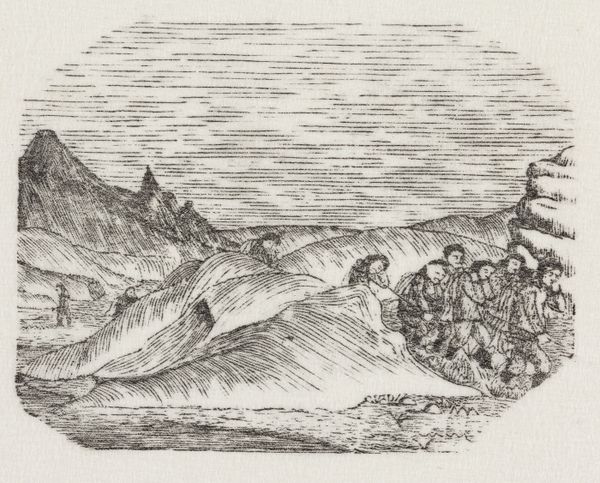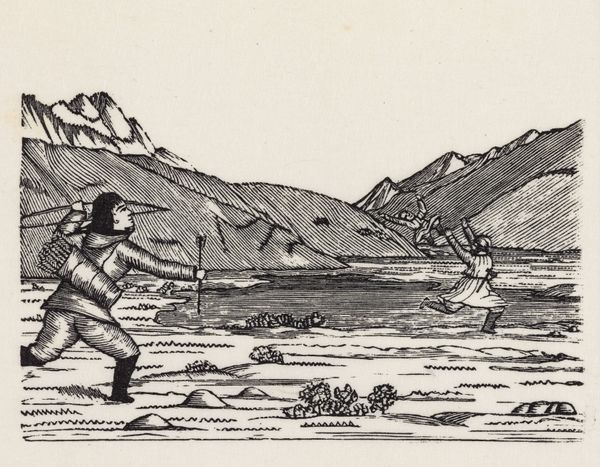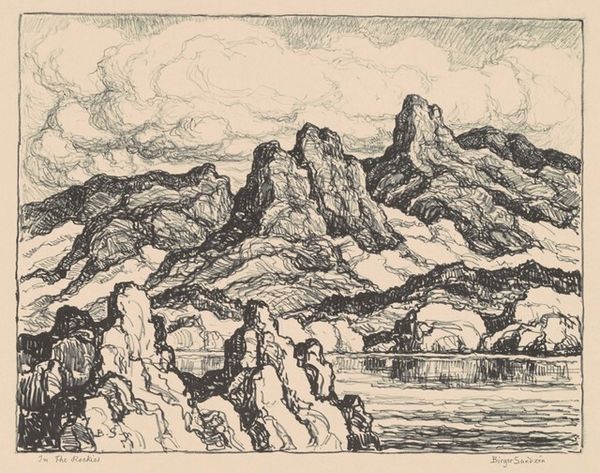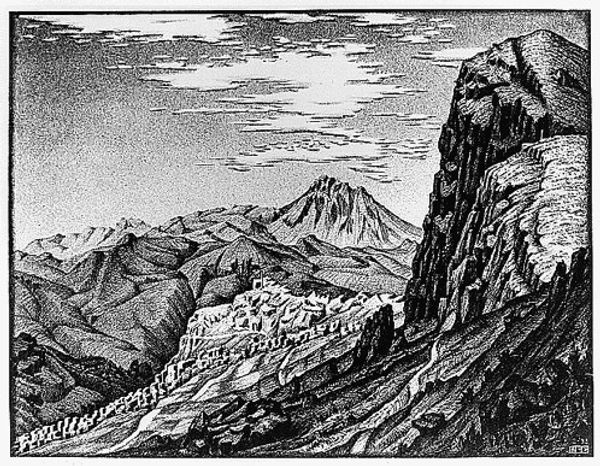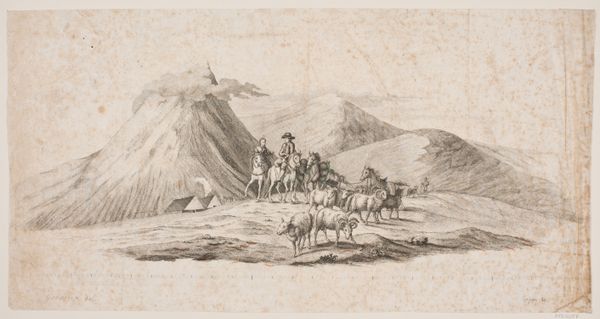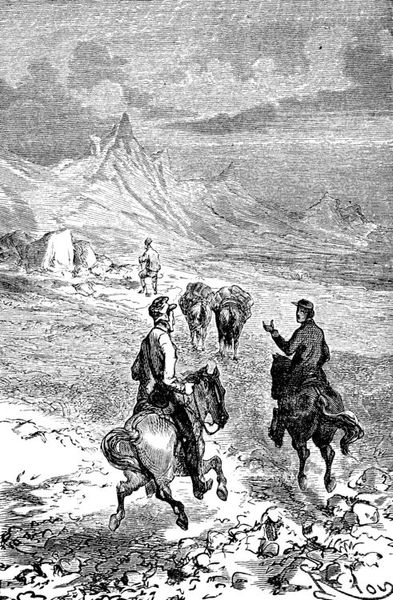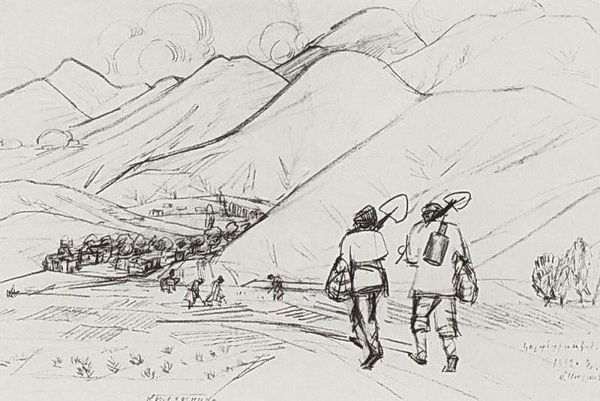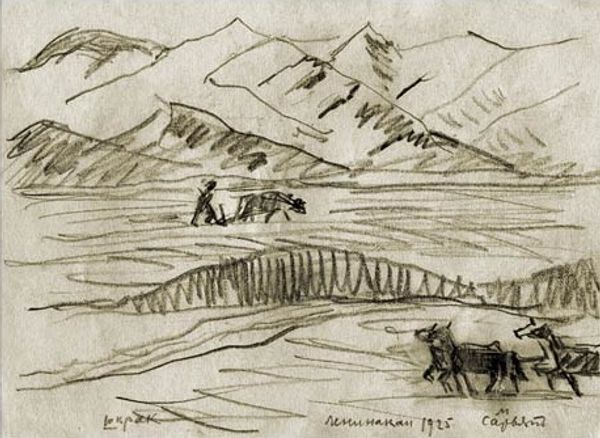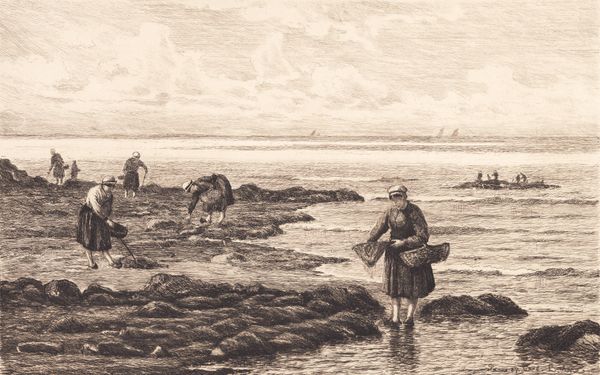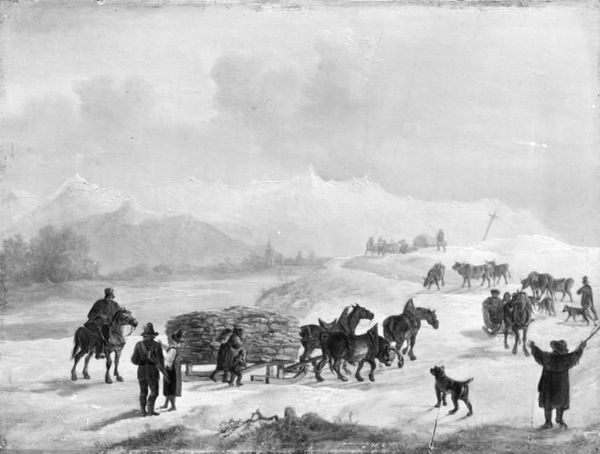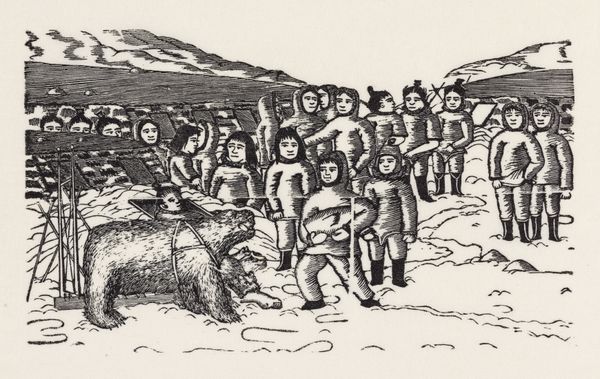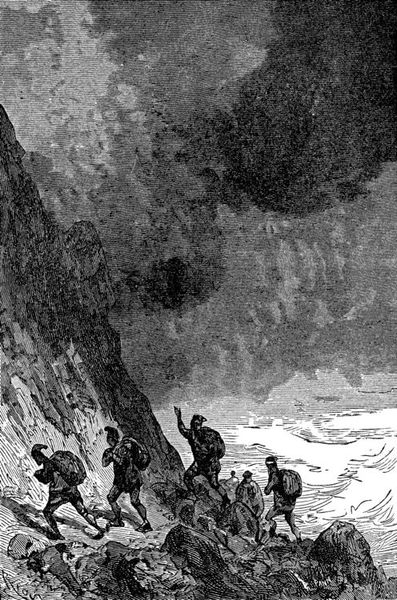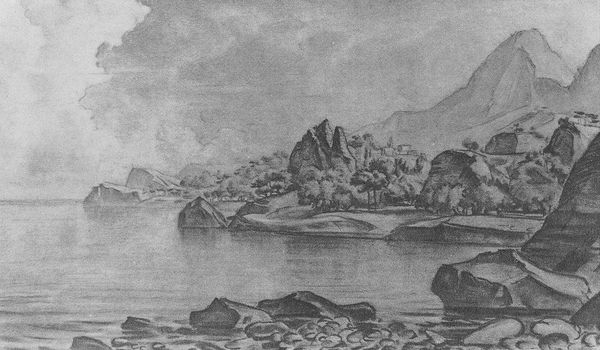
Copyright: Public domain
Editor: So this ink drawing from 1897, by Ivan Aivazovsky, is titled *Dejection of Noah from Mount Ararat*. It's a striking landscape. I feel a somber tone in its simplicity and open space, which resonates deeply. What kind of story do you see here? Curator: A story of endings and beginnings, marked with poignant expulsion and weary anticipation. Look at the mountain itself: Ararat isn't simply a geographic feature, it's an anchor of cultural memory. In Aivazovsky's visual vocabulary, it represents not just salvation but the commencement of a new covenant, the re-emergence of civilization. Doesn't the bleak emptiness in the foreground echo that sense of displacement and a venture into the unknown? Editor: Definitely. The figures seem small against such a vast landscape, really emphasizing that idea of starting over. Do you think there’s a reason Aivazovsky chose to depict this moment of ‘dejection,’ rather than, say, the landing on Ararat or the rainbow appearing? Curator: Precisely. Dejection, I think, is Aivazovsky’s focus because it reveals something profound about human resilience after cataclysmic events. There's a psychological weight in their leaving: think about what "home" even *means* after something like this. Isn't that shared understanding, that collective trauma, visible in their bowed postures, in the tentative lines suggesting the path ahead? Aivazovsky is subtly underscoring how such cultural traumas and shared memories affect not only individuals, but their shared visual language as a community. Editor: That's such an interesting interpretation. It makes me consider the power of art to visualize shared experiences through time. Thanks, this gave me a fresh perspective. Curator: My pleasure. Indeed, seeing symbols not merely as illustrations but as condensations of experience adds another layer of understanding to art and our history.
Comments
No comments
Be the first to comment and join the conversation on the ultimate creative platform.
